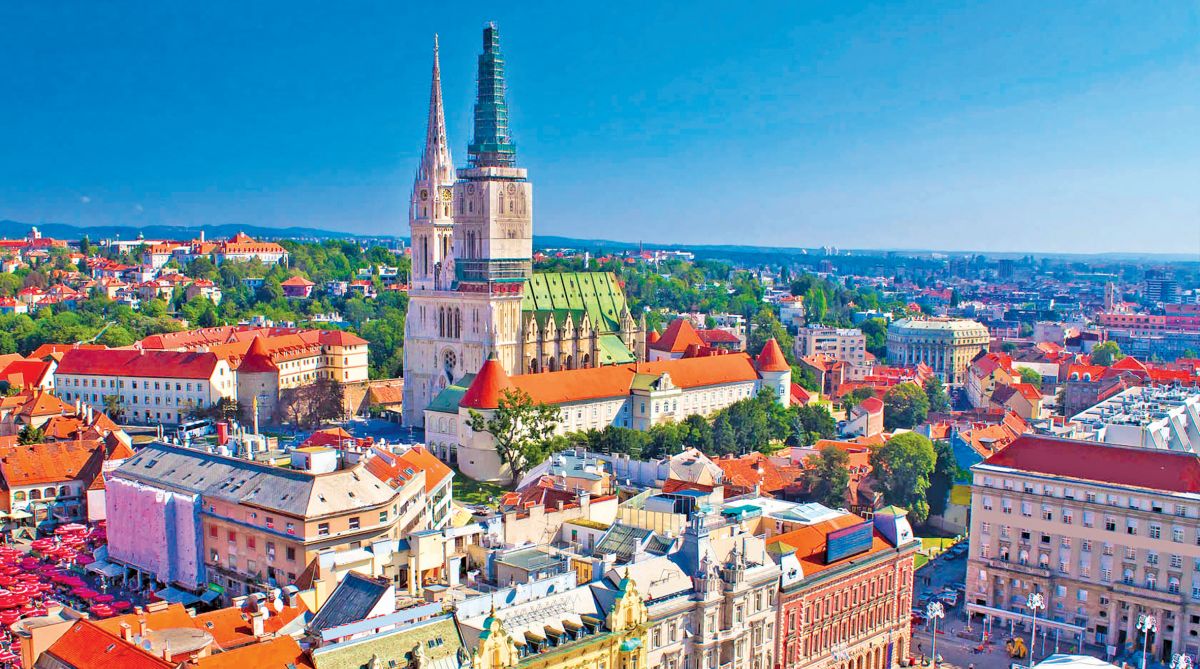Kaziranga National Park breaks revenue records amidst tourism surge
Renowned for its iconic one-horned rhinoceros, Kaziranga National Park and Tiger Reserve attracted a total of 3,27,493 tourists in the last fiscal year.
A country rich in history and whose cultural heritage sways all those who visit its pristine coastlines and cobblestoned alleys.

Zagreb.
If you imagine a country which combines the history and gaiety of Italy, the undulating hills and magnificent architecture of Austria, the island ambience of Greece and blue coast of Mauritius, you would get an idea of Croatia.
Today, the tourism world is discovering Croatia and in the last few years, it has been among the top five destinations in most of the authoritative ranking agencies like Lonely Palace, National Geographic Traveler and Michelin Travel Guide. Indeed, this small “boutique country” offers everything a tourist could want.
With its sublime stretch of Adriatic coasts and its incredibly blue sea, Croatia has long been regarded as one of the most beautiful parts of Europe. The aura of medieval Croatia endures in the cobbled streets of Rovinj and the recently restored otherworldliness of Dubrovnik’s Old City. The country is also home to some of Europe’s finest Roman ruins like the immense palace of Diocletian in Split, or the Roman amphitheater in Pula.
Advertisement
A combination of car rides with occasional ferry rides is the best way to discover Croatia. This fascinating country is a compact one with various activities in every kilometer. Here a one-hour drive will take you from the northern regions with a continental climate to the warm coast. In wintertime, you can get from the snow-bound interior to the sunny coast of the Adriatic in a single day.
Zagreb is a starting point for most, with its simmering nightlife, fine restaurants and choice museums. The city is divided between the medieval Upper Town with grand buildings, quaint houses and churches and Austrian influenced Lower Town where Operas, cafes and shops abound.
From Zagreb, head north to explore the scenic Zagorje region, a bucolic landscape of forests, pastures, and farms. Here, one can visit Tito’s birthplace at Kumrovec, which is a fascinating display of traditional village life.
Nearby, the castle of Trakoscan resides in mystery of years long past. From there, it is on to another beautifully restored castle at Varazdin. The stunning Baroque city of Varazdin, one-time capital of Croatia, retains a strong sense of its glory.
Soak up the exquisite architecture and then take to the waters at the Varazdinske Toplice spa. On the way south, stop at the pilgrimage site of Marija Bistrica for heady views of the surrounding regions. The green rolling hills of Zagorje flatten out as you head east to Slavonia.
On the edge of Croatia is the Hungarian influenced town of Osijek, on the Drava River. Enjoy Osijek’s unique architecture and take a day trip to Kopacki Rit Nature Park with its profusion of bird life, or to war-torn Vukovar, to see the majestic Lipizzener horses of Dakova. Then head south to Unesco protected World Natural Heritage site, Plitvice Lakes National Park, a watery wonderland of lakes and numerous waterfalls.
Begin the journey at the Unesco World heritage site of Porec to admire the marvelous Byzantine frescoes and Roman streets before heading south to the charming fishing port of Rovinj and its outstanding Venetian inspired architecture.
Wander Rovinj’s cobblestoned streets for a day and then move on to Pula. Tour the evocative Roman ruins and visit a Coliseum that can rival Rome’s, before heading on to the magnificent resorts on the Brijuni Islands or nearby beaches for some rest and recreation.
It is then, time to explore those amazing cities, spectacular beaches, and fabled islands of the Dalmatian coast. Stop for a night in the old Austrian period resort of Opatija for a healthy stroll along the seaside promenade and gorgeous views of the Kvarner coast.
From the nearby Port city of Rijeka, one can catch coastal boats for the rest of the explorations of the islands and coastal towns of the Adriatic Krk Island, Cres Island, Mali Losinj, Susak, Rab and Pag islands. Then it is time to head on to Sibenik, home to the finest cathedral in Croatia, the Cathedral of St Jacob. Don’t miss out on a swim under the falls at Krka National park.
Next is a stroll through lovely Trogir and then a meander around the Roman ruins of Solin which by when you’ll be ready for Diocletian’s Palace in Split. This exuberant city on the sea makes a fascinating contrast to busy Zagreb. It is a fascinating blend of ancient architecture and up-to-the-minute nightlife.
From Split, catch a coastal ferry to Stari Grad on Hvar Island, perhaps the most beautiful island in the Adriatic, replete with pine, lavender fields and idyllic offshore islets. Hvar also enthralls every one with its exquisite Renaissance architecture.
The Pakleni Islands nearby has an underwater reef, canyon and nudist beach to explore. Nearby, the coastal town of Bol is the windsurfing capital of Croatia. Take another boat ride to the lush wooded Korcula, which is the birthplace of Marco Polo.
Take the coastal road down to Dubrovnik whose pride and cultural identity are all still intact from centuries as an independent city-state. The pearl of the Adriatic deserves at least a couple of days. The gleaming marble streets nestled within a curtain of stone walls contain a profusion of fine sculpture and vibrant cultural life. From Dubrovonik, cross the blue Adriatic water to reach Miljet National Park, a magical isle that is said to have bewitched Odysseus.
All through the region, while the nature and manmade sites will bewitch you, you can feast on its wonderful combination of Mediterranean and Continental food washed down with fine local wines. From an internal strife ravaged recent past, to playing in the finals of the World Cup says a lot about this beautiful country.
Advertisement